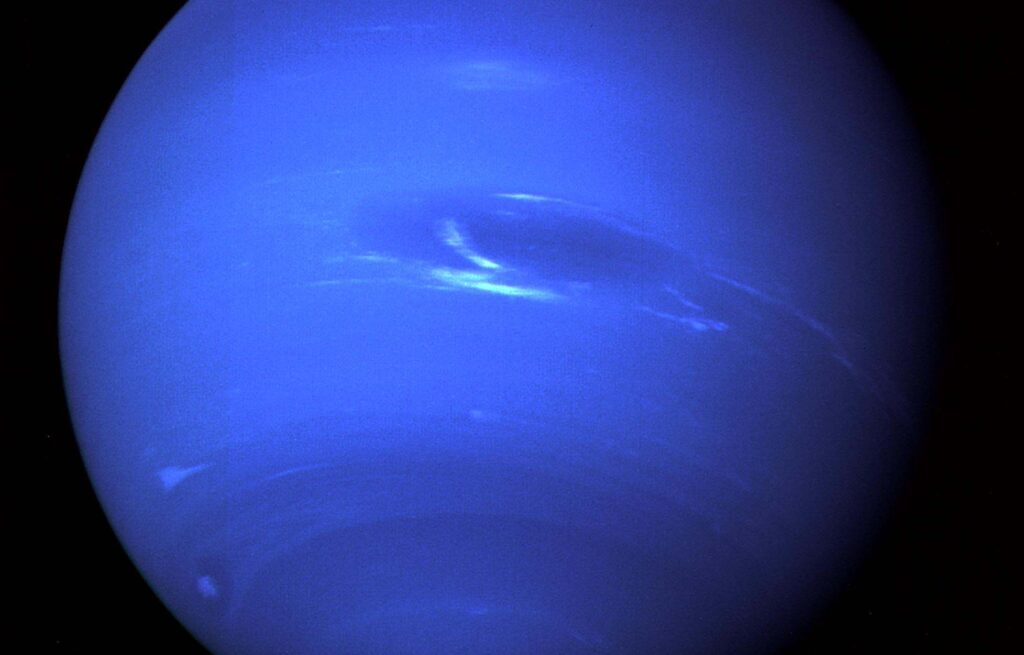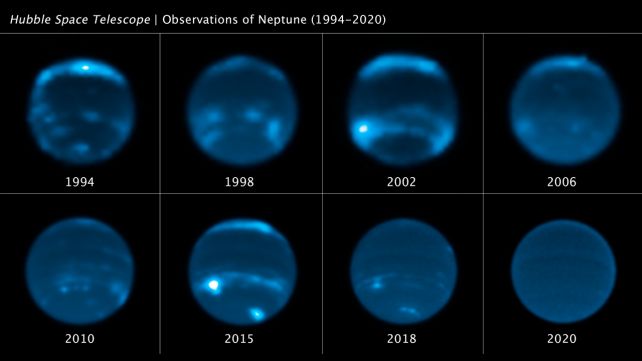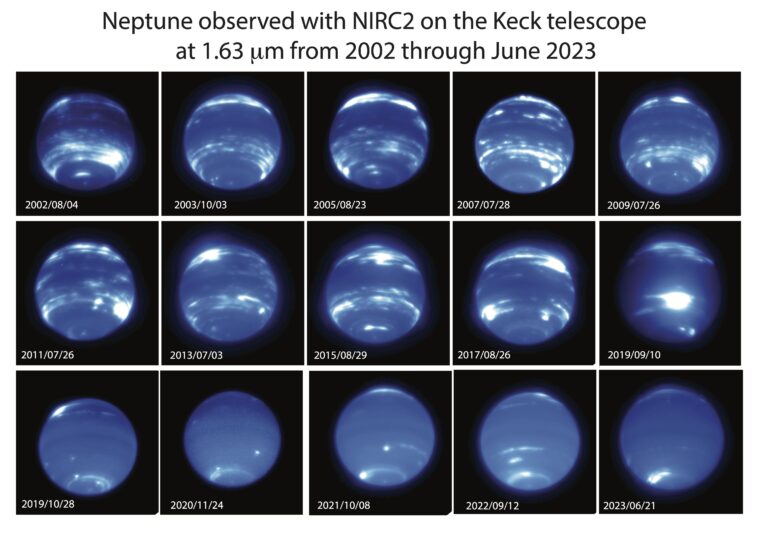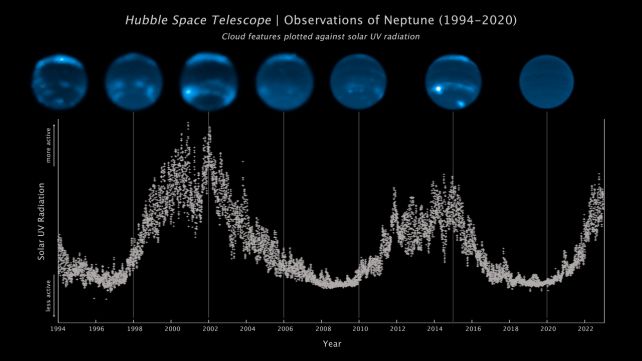Neptune, the farthest major planet in our solar system, has experienced a puzzling phenomenon. Over the past few years, the light streaks of clouds that usually decorate its blue atmosphere have strangely disappeared.
Scientists have been observing Neptune using tools like the Hubble Space Telescope since 1994. These records reveal that this isn’t the first time such a cloud-vanishing act has occurred. Oddly, these occurrences seem to relate to the 11-year solar cycle, a period of changing solar activity.
Considering that Neptune is incredibly distant from the Sun – more than 30 times farther away than Earth – this finding has surprised and intrigued astronomers.
The most recent event has been particularly dramatic. In 2019, clouds around Neptune’s middle latitudes began to fade. By 2020, the planet appeared mostly clear of clouds. Even in 2023, the clouds have not fully returned to their previous levels.
This unexpected behavior is fascinating because Neptune’s earlier instances of low cloud activity were not as striking or prolonged.
Neptune is unique in the Solar System, being far away and less studied than its closer neighbors. However, despite the challenges of observing it from a distance, researchers have been able to spot long-term patterns in its atmosphere.
By analyzing data from the Hubble Space Telescope since 1994, the Keck Observatory since 2002, and the Lick Observatory in 2018 and 2019, scientists have discovered that the amount of cloud cover on Neptune changes in approximately 11-year cycles, which align with the Sun’s activity patterns.
These cycles are linked to the Sun’s magnetic field reversals, which happen every 11 years and are marked by increased solar flares and sunspots. Interestingly, around two years after these solar events begin, clouds start forming on Neptune. There’s also a connection between the planet’s cloud cover and its brightness, or albedo.
This research provides strong evidence for a connection between Neptune’s clouds and the Sun’s cycles. It supports the theory that the Sun’s strong ultraviolet rays might trigger a chemical reaction that produces clouds on Neptune.
Despite these findings, scientists still need to analyze more data to fully understand the mechanisms behind these phenomena. There’s a possibility that UV interactions could darken, not lighten, the clouds, leading to lower brightness rather than increased reflectivity. Additionally, storms deep within Neptune could complicate the picture by causing clouds independently of photochemical reactions.
Ongoing observations, including data from the James Webb Space Telescope, continue to support these discoveries as we approach the next solar maximum in 2025.
Although it would be ideal to send a spacecraft for closer study, for now, these remote observations provide valuable insights into Neptune’s enigmatic behavior.
The research has been published in Icarus.
Also Read: Russia’s Luna-25 Spacecraft Hits The Moon And Crashes.









